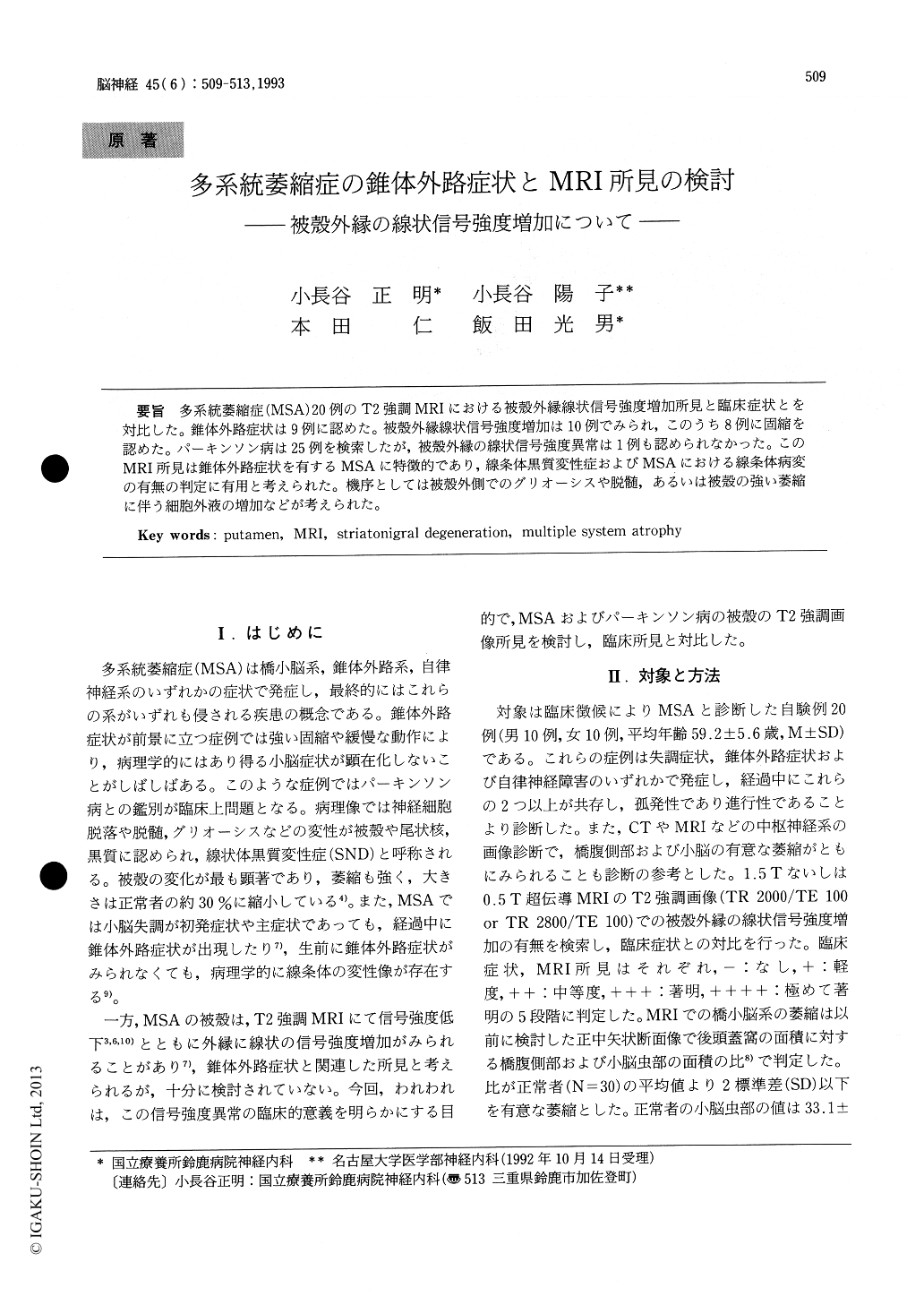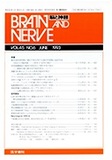Japanese
English
- 有料閲覧
- Abstract 文献概要
- 1ページ目 Look Inside
多系統萎縮症(MSA)20例のT2強調MRIにおける被殼外縁線状信号強度増加所見と臨床症状とを対比した。錐体外路症状は9例に認めた。被殼外縁線状信号強度増加は10例でみられ,このうち8例に固縮を認めた。パーキンソン病は25例を検索したが,被殼外縁の線状信号強度異常は1例も認められなかった。このMRI所見は錐体外路症状を有するMSAに特徴的であり,線条体黒質変性症およびMSAにおける線条体病変の有無の判定に有用と考えられた。機序としては被殼外側でのグリオーシスや脱髄,あるいは被殼の強い萎縮に伴う細胞外液の増加などが考えられた。
We did a clinico-MRI study concerning extrapy-ramidal symptoms and T2-weighted MRI findings of the putamen in twenty patients with multiple sys-tem atrophy (MSA) as well as twenty-five with idiopathic Parkinson's disease. Nine out of twenty MSA patients showed extrapyramidal symptoms. And we could not observe cerebellar ataxia in two of these patients because of severe rigidity and akinesia.
Eight out of nine MSA patients with extrapyra-midal symptoms showed linear hyperintensity in the outer margin of the putamen. This abnormal intensity was bilateral and symmetric in most patients. However, in MSA patients without extra-pyramidal symptoms, only one patient showed the linear hyperintensity. We could not find such abnor-mal intensity in any patients with Parkinson's disease.
On proton density MRI, the signal intensity in the lesion was higher than that in the gray matter, which leads the speculation that the hyperintensity is gliosis of the putamen or increased extracellular fluid space caused by severe shrinkage of the putamen. This characteristic MRI finding is useful to distinguish MSA with extrapyramidal symptoms from Parkinson's disease.

Copyright © 1993, Igaku-Shoin Ltd. All rights reserved.


